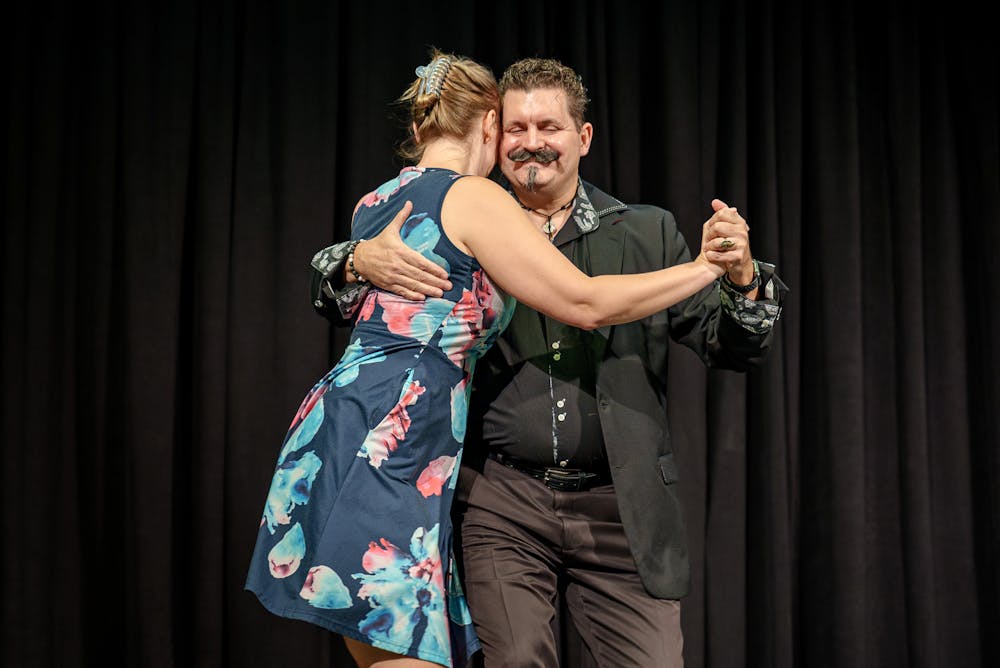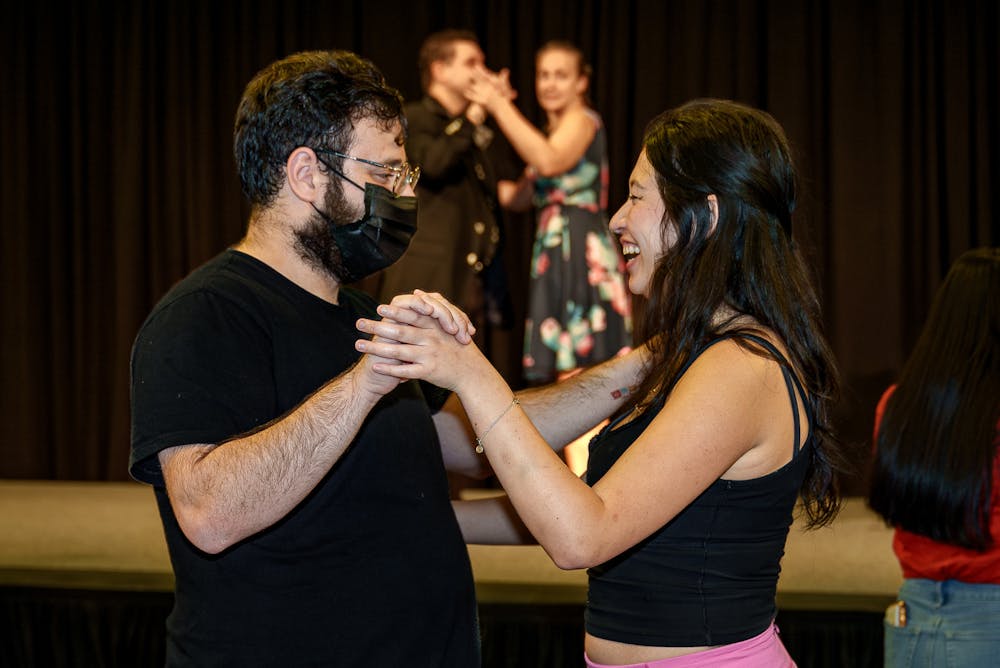Aidan Huene and John Singletary, two Argentine tango dancers from the Research Triangle, dance with Tango Utopia, a social group based in Durham.
Huene, who has been dancing since 2015, said the distinction between Argentine tango and another form — ballroom tango — is its social and relaxed nature.
“Social Argentine tango is really just focused on social dancing,” Huene said. “You essentially create a community, because wherever you are, and you can travel to other communities, it is like a little family.”
The duo performed at El Centro’s Hispanic Heritage Month Festival on Sept. 13.
Huene said the milonga — a tango hall where people would go to dance — fostered a sense of community in Buenos Aires, Argentina, and Montevideo, Uruguay, where tango originated.
Singletary, a former chef, said he discovered tango with his ex-wife through a friend years ago. He said at first, he hated it because there was no formula.
“You don't memorize,” Singletary said. “You feel yourself and you feel your partner just standing there, and then you figure out how you can communicate without speaking. It's very strange.”
Argentine tango is characterized by a close hold between partners and a contra body movement with an emphasis on rhythm and improvisation.
After initial challenges, Singletary said he was hooked. He traveled with his ex-wife to Buenos Aires, various cities in Europe and the U.S. to find communities of Argentine tango dancers.
“It was super addictive,” Singletary said. “We were trying to find it everywhere we possibly could.”

A dancer duo performs a Hispanic slow dance in the beginning of the Hispanic Heritage Month Kickoff on Sept. 13 in the Alumni Gym.
Neither Singletary nor Huene speak Spanish or have Latino roots, but he said Argentine tango is welcoming to all.
“We're all in this crazy Argentinian dance, but it is such an evolving dance that it welcomes everybody,” Singletary said. “But when you go to Argentina, you're really stuck in the middle of the mecca of all of this tango.”
In 2009, tango was added to UNESCO’s Representative List of the Intangible Cultural Heritage of Humanity. According to UNESCO, this cultural dance was developed through a combination of European immigrants, regional natives and descendants of African slaves.
Singletary said the lyrics to tango music comes from poetry, which incorporates themes like tragedy and love.
“It's all very suggestive at times. It’s just bleeding heart,” Singletary said. “You don't have to speak the language to really appreciate the dance itself.”
Huene said Argentine tango music transcends language barriers.
“It's really pretty to listen to, even if you don't understand the lyrics,” Huene said. “You can feel the emotion coming out in it.”
Singletary said tango pushes people out of their comfort zones.
“We in the United States have this force field of personal space,” Singletary said. “We don't let people in. And in tango, you have to invite people way inside. It takes a long time to get that close to somebody.”
He said while dancing in social milangas, tango duos do not touch anyone but their partner.
“There's little ways that people communicate with each other that are not spoken,” Singletary said. “We navigate everything with the intent of never disturbing anybody else as this flow across the dance floor.”
Huene said learning to dance Argentine tango takes time.
“When you start, you're on the outside,” Huene said. “But then as you develop your own self awareness, you’re able to connect to your partner.”
She said she has to focus on following the leader in the duo.
“When John's the leader, I'm directing my energy towards him, so that way I can feel what he's leading me or inviting me to do in the dance.”
She said this connection is the most important part of the dance.
“Steps that you do, that is a part of it,” Huene said. “But the connection is much more fundamental. That's at the core of it.”


